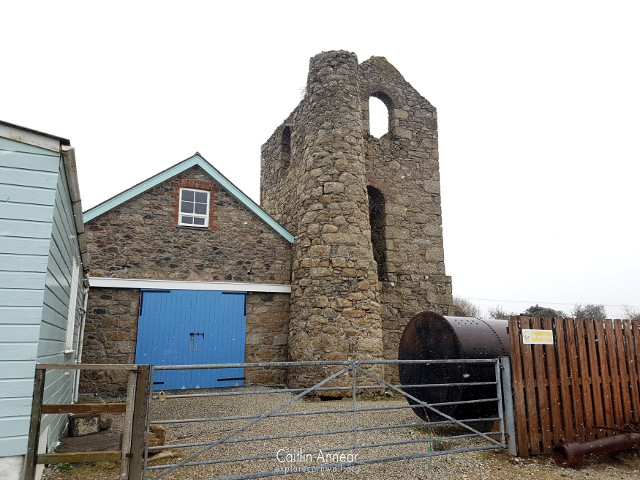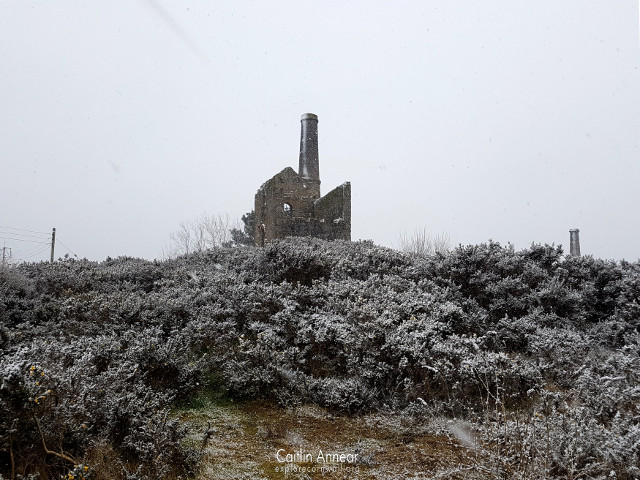South Condurrow Mine in Troon has a long and convoluted history. The whole area has been a successive line of mine amalgamations and closures, with records going back at least to before the 1830’s. The mine reopened in 1844 as part of Great Condurrow, officially becoming South Condurrow in 1850 when its predecessor Old Tye Mine was renamed. Like all others in the area, it started its life as a copper mine, but with discovery of the Great Flat lode, it eventually moved towards tin as commodity prices changed. Despite ongoing issues with flooding in the lower parts of the mine, it remained successful until the sinking of Marshall’s shaft in the western section of the mine, closing in 1896. In 1897, some of the eastern end was presented to Camborne School of Mines and was renamed King Edward Mine.

Between 1899-03, work was attempted again on the western end, but proved unsuccessful, with ownership being handed over to Wheal Grenville. Wheal Grenville closed in 1920, leading to flooding of the King Edward Section, with work having to move to the more northern part of the mine. King Edward is now a museum, opened in 2002, as part of the Mineral Tramways project.
The South Condurrow stamps engine was built in 1869 to house an engine of unknown size. It ran 48 heads of stamps initially, which was upped to 96 in 1872. The crank and twin flywheels would have sat on the very prominent granite grating in front of the engine. It’s boiler house would have stood behind, housing two boilers.
A 55″ pumping engine originally worked out of Engine shaft, however this was taken down after CSM took over he site in 1897 and replaced with a headgear to give students access down to the 40-fathom level (73m). The engine would have sat on the northern side of the shaft.

The King Edward whim engine was built in 1868 to house a 25″ engine that came from another part of the mine to hoist from Engine shaft. She worked until 1908, before the engine was sent off to Castle-an-dinas mine; it then spent some time at Poldark mine before being reinstalled back in it’s house.

Plantation (290-fathoms/530m), Engine/Sump (70-fathoms/128m), King’s (77-fathoms/141m), Vivian’s, Junction, Marshall’s (208-fathoms/380m) New and Frazer’s.
King’s, South Condurrow Copper, Pease’s and William’s.
1864-1902
11,403 tons (11,585,983 kg) of black tin, 1,060 tons (1,077,010 kg) of 10% copper and 4 tons (4,064 kg) of arsenic
Marshall’s pumping engine house sits on the side of the road in Troon. Built in 1881 for a 60″ engine bought second hand from Wheal Jane (the old one) where it previously worked on Giles’ shaft. Behind the pumping engine are the remains of the 26″ whim. This was built in 1886 for an engine that came from West Chiverton Mine. It had one boiler in its boiler house.

All areas of South Condurrow mine are currently free to see and explore. The King Edward mine site has public access to everywhere but it’s museum (which is still totally worth a visit) and the remains of Engine shaft. The Marshall’s complex has a public footpath to it, although when I was there I couldn’t see any way to get to the whim without battling the gorse. All engine houses are consolidated and shafts capped/grilled.
There is a small free car park at King Edward.
King Edward Mine https://www.kingedwardmine.co.uk/
Brown, K. and Acton, B. (2007) Exploring Cornish Mines: Volume Two. 2nd edn. Truro: Landfall Publications.
Dines, H. G. (1956) The metalliferous mining regions of south-west England. British Geological Survey.
Nance, D. and Brown, K. (2014) A complete guide to the engine houses of West Cornwall. Gloucestershire: Lightmoor Press.







